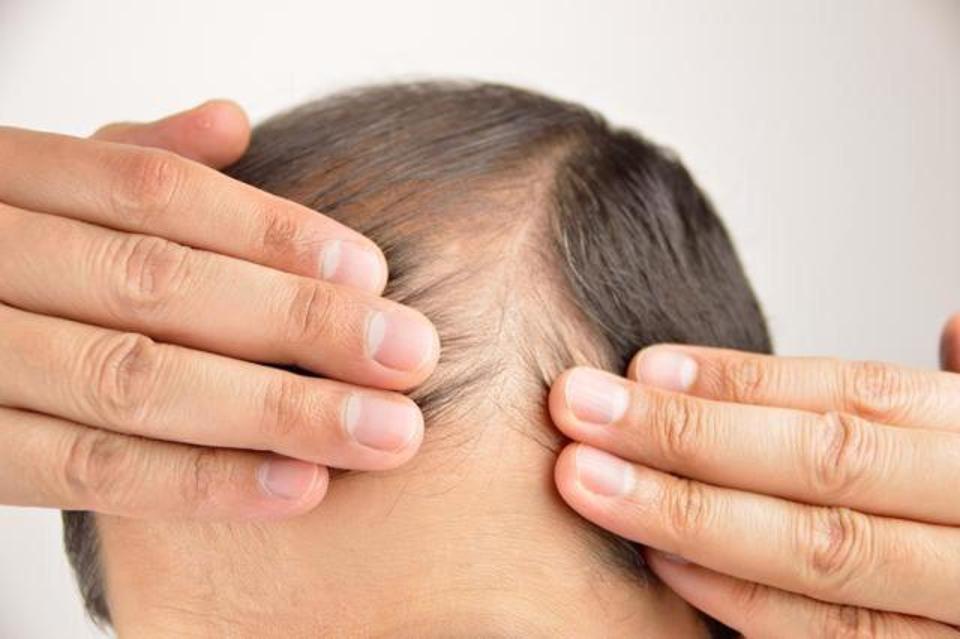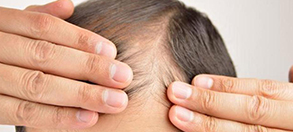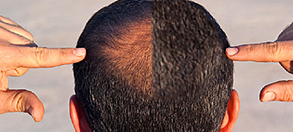Contents
Male Pattern Baldness
 Male pattern baldness is an extraordinarily common reason for hair loss in men. Despite being something many (if not most) men experience at some point in their lives, a receding hairline, bald spot, or thinning hair often strike a major blow to anyone’s self-esteem.
Male pattern baldness is an extraordinarily common reason for hair loss in men. Despite being something many (if not most) men experience at some point in their lives, a receding hairline, bald spot, or thinning hair often strike a major blow to anyone’s self-esteem.
Men can be devastated by their male pattern baldness, believing there’s nothing they can do to stop or reverse it. However, in many cases, there is something that can be done.
We’re proud to be the hair transplant surgeons of choice for pro athletes, actors & celebrities.
Experiencing male pattern baldness doesn’t have to mean amassing a giant hat collection (unless you want to, of course). There are effective treatments available, including hair transplants, oral medication, and topical creams.
First, it’s important to understand what sets androgenic alopecia apart from other forms of hair loss, and what causes it. Then, you can start to find a solution for your unique situation.
What is Male Pattern Baldness?
While many men are ashamed and embarrassed by their hair loss, male pattern baldness is very common.
Male pattern baldness (clinically known as androgenic alopecia) is the most common cause of hair loss in men, accounting for over 95% of cases. This condition simply means the hair is thinning, and is not believed to be caused by another medical condition, such as an autoimmune or thyroid disorder.
About 25% of men experience hair loss by age 21 — when many men are still working toward their undergraduate degree or professional certification. By the time they’ve reached 35, 66% of men have experienced some sort of hair loss, even if it isn’t particularly noticeable. And by age 50, that number jumps to 85% having experienced a noticeable amount of hair loss.
No two cases of male pattern baldness are the same. Some men experience receding hairlines above the forehead first, while others lose hair on top (and are left with hair on the sides and back), and some get a bald spot on the crown of the head first.
There’s no rhyme or reason to it, which is why it’s important to have a doctor diagnose the problem. This way, you can be assured you’re getting the best recommendation for your specific situation.
What Causes Male Pattern Baldness?
Male pattern baldness is believed to be the result of excess Dihydrotestosterone (DHT — a byproduct of testosterone)
DHT falls under the class of male sex hormones, also known as Androgens. Androgens have many functions, and one of its main jobs is to regulate hair growth. Having excess androgens can cause more hair to grow on a man’s face and body, but it can also cause hair on the head to fall out.
However, the lasting impact of hair loss typically occurs because the hair follicles themselves are shrinking — oftentimes due to a sensitivity to dihydrotestosterone. In this case, male pattern baldness occurs because men inherit hair follicles that are sensitive to DHT, which makes them shrink over time.
As they shrink, they produce fewer hairs. Contrary to popular belief, one hair follicle does not produce one single hair. In fact, most follicles produce multiple hairs, and can produce as many as five.
As fewer hairs are produced by the DHT-sensitive follicles, the area of the scalp where those follicles are located appears to be thinning out. Over time, the follicle will either produce hairs that aren’t the same as the old hair (possibly thinner, shorter, finer, or all three), or stop producing hair entirely.
Again, every case is different, but most men begin to experience male pattern baldness with a receding hairline or thinning spot at the crown of the head. It’s believed that these areas contain follicles that are more sensitive to DHT, and are therefore the most often affected (hence, pattern baldness).
Eventually, most men are left with the classic “horseshoe” pattern — though some men also experience hair loss on the sides and back of the head, as well.
Male Pattern Baldness Treatment Options
Follicular Unit Extraction (FUE)
One of the ways to treat androgenic alopecia is with a procedure called a follicular unit extraction. During this procedure, we remove healthy, functional hair follicles from densely populated areas of the head (typically on the back of the head, between the ears) and transplant them to areas that are thinning.
This process requires a skilled surgeon or hair transplant technician — preferably one with a lot of prior experience with FUE. The procedure is extremely tedious and time-consuming, but oftentimes delivers excellent results with far fewer painful side effects than the outdated “strip” procedure.
Prior to the FUE technique being developed, hair transplant surgeons would cut a strip from a densely populated area of the scalp and relocate it to a thinning area. After the strip was cut, the scalp would have to be stretched so it could be sewn back together, which could be far more painful, was much less precise, and typically left a scar.
When androgenic alopecia is treated with FUE, the surgeon is removing hair follicles presumed to not be sensitive to DHT and relocates them to areas in which the follicles have shrunk. The surgeon can actually remove up to 20% of the hair follicles in a given area before it becomes noticeable (though most surgeons stop around 15% to make sure there’s still enough coverage).
The results of FUE are permanent because the hair in the healthy follicle continues to grow as if nothing happened to it. However, hair does not regrow in the donor site because the follicles themselves have been removed.
It’s important to note that FUE may not be suitable in all cases. For example, in cases of severe hair loss, there may not be enough hair remaining to cover the balding surface area. In addition, those who’ve had the hair strip transplant done in the past may not have a donor area full enough to supply the necessary follicles.
For these reasons, we always ask potential patients to have a consultation before we make any recommendations or give an estimate. We can’t give you an accurate quote for treatment if we don’t know how many hair follicles we’ll need to move to cover the transplant area.
We won’t recommend you have FUE performed if it’s unlikely you’ll see the results you want from the procedure — and we can’t assess whether or not you’re a good candidate until we actually see you.
Oral Finasteride
Finasteride is an oral medication designed to treat male pattern baldness by blocking androgen production. It’s more commonly known by its brand names, Propecia and Proscar. The thought process behind this drug is that by reducing one of the hormones typically responsible for hair loss, the hair loss will stop, or at least slow down.
Patients typically don’t see results until they’ve been taking the medication for at least three months, but sometimes can take up to one year. It’s also important to remember that finasteride is only effective for as long as it’s being taken — when you stop taking the medication, androgenic alopecia returns.
The list of possible side effects with finasteride can be minor and may go away on their own (like a runny nose or drowsiness), but some require medical attention, such as dizziness, chills, unusual weight gain or loss, and breast enlargement or tenderness.
If you don’t see results after one year of taking finasteride, it’s unlikely you’ll see any. At that point, your doctor will probably recommend you stop taking it and start looking into more permanent treatment options, like FUE.
Topical Minoxidil
Most commonly known under the brand name Rogaine, you can purchase this medication in most pharmacies and grocery stores without a prescription.
Minoxidil is one of the ways people often begin treating their androgenic alopecia — especially since it was transitioned into an OTC (over-the-counter) medication in the 1990’s.
Minoxidil is a cream or lotion applied directly to the scalp. It’s designed to slow hair loss caused by androgenic alopecia (among other causes of hair loss), and works to stimulate new hair growth in follicles.
Much like finasteride, results can take at least four months to become evident, but may take up to one year. Once you stop using the medication, hair loss will return and any new hair will cease to grow.
Choosing a Male Pattern Baldness Treatment Plan
Which treatment plan you choose will depend on your specific case of androgenic alopecia and what can be realistically done to combat it. If you’ve already tried minoxidil on your own without any significant result, the next step may be to speak to your doctor about finasteride.
If both of those solutions have proven unsuccessful, FUE may be the best option for you. Again, it’s impossible for Houston Hair Transplant Center (or anyone else) to give you an accurate assessment over the phone. It’s imperative to see each case and review your medical history before we can recommend any kind of procedure to you.
To make the process a little bit smoother for you, we offer virtual consultations through our website. You fill out a simple form with contact information and health history, then upload photos.
We’d love to talk to you about your male pattern baldness treatment options. If you’re interested in FUE, get in touch with us today!


